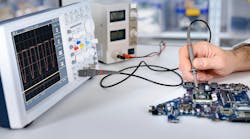Let’s Talk About Sensors and Analog Signal Conditioning
Explosive growth in intelligent embedded systems, which are being deployed everywhere in a cloud-connected IoT-driven smart ecosystem, has no doubt had a significant impact worldwide. The latest and most powerful microcontrollers and processors empower these sophisticated solutions, driven by powerful software that’s now becoming synthetically aware. However, without the input about the world around them and the applications they address, they’re next to useless.
To provide the data required by an intelligent electronic system for it to operate, sensors of every type are deployed to distribute the information about its environment and task at hand. These sensors are paired with analog front-ends (AFEs), signal conditioners that typically combine operational amplifiers and filters to improve input signals from sources such as sensors or antennas. Though the digital world may be run on binary digits, it needs to derive information from, and apply actions to, the real analog world to function.
Creating, choosing, and using AFEs and sensor applications can be challenging, depending on a designer's background and expertise. Electronic Design's Sensors and AFEs Week looks at the issues from different perspectives from designers of embedded applications that need analog support, to those offering analog solutions for others to utilize.
About the Author
Alix Paultre
Editor-at-Large, Electronic Design
An Army veteran, Alix Paultre was a signals intelligence soldier on the East/West German border in the early ‘80s, and eventually wound up helping launch and run a publication on consumer electronics for the US military stationed in Europe. Alix first began in this industry in 1998 at Electronic Products magazine, and since then has worked for a variety of publications in the embedded electronic engineering space. Alix currently lives in Wiesbaden, Germany.
Also check out his YouTube watch-collecting channel, Talking Timepieces.



